
The Treaty of Trianon often referred to as the PeaceDictate of Trianon or Dictate of Trianon in Hungary, was prepared at the Paris Peace Conference and was signed in the Grand Trianon château in Versailles on 4 June 1920. It formally ended World War I between most of the Allies of World War I and the Kingdom of Hungary. French diplomats played the major role in designing the treaty, with a view to establishing a French-led coalition of the newly formed states.

The Kingdom of Romania was a constitutional monarchy that existed from 13 March (O.S.) / 25 March 1881 with the crowning of prince Karl of Hohenzollern-Sigmaringen as King Carol I, until 1947 with the abdication of King Michael I and the Romanian parliament's proclamation of the Romanian People's Republic.

Baia Sprie is a town in Maramureș County, northern Romania. Baia Sprie is situated at a distance of 9 km (5.6 mi) from Baia Mare and belongs to the Baia Mare metropolitan area.
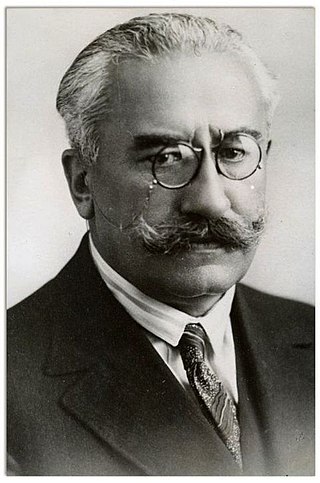
Alexandru Vaida-Voevod or Vaida-Voievod was an Austro-Hungarian-born Romanian politician who was a supporter and promoter of the union of Transylvania with the Romanian Old Kingdom. He later served as 28th Prime Minister of Romania.
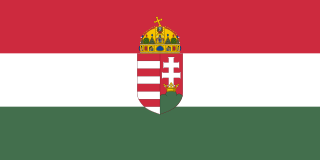
Northern Transylvania was the region of the Kingdom of Romania that during World War II, as a consequence of the August 1940 territorial agreement known as the Second Vienna Award, became part of the Kingdom of Hungary. With an area of 43,104 km2 (16,643 sq mi), the population was largely composed of both ethnic Romanians and Hungarians.

The Banat Republic was a short-lived state proclaimed in Timișoara c. 31 October 1918, during the dissolution of Austria-Hungary. The Republic claimed as its own the multi-ethnic territory of the Banat, in a bid to prevent its partition among competing nationalisms. Openly endorsed by the local communities of Hungarians, Swabians and Jews, the German-speaking socialist of Jewish origin Otto Roth served as its nominal leader. This project was openly rejected from within by communities of Romanians and Serbs, who were centered in the eastern and western halves of the region, respectively. The short-lived entity was recognized only by the neighboring Hungarian Republic, with which it sought a merger. Its military structures were inherited from the Common Army, and placed under the command of a Hungarian officer, Albert Bartha.

The United States of Greater Austria was an unrealised proposal made in 1906 to federalize Austria-Hungary to help resolve widespread ethnic and nationalist tensions. It was conceived by a group of scholars surrounding Archduke Franz Ferdinand of Austria, notably by the ethnic Romanian lawyer and politician Aurel Popovici.

The historical regions of Romania are located in Central, Southeastern, and Eastern Europe. Romania came into being through the unification of two principalities, Wallachia and Moldavia in 1862. The new unitary state extended over further regions at various times during the late 19th and 20th centuries, including Dobruja in 1878, and Transylvania in 1918.

The Second Vienna Award, also known as the Vienna Diktat, was the second of two territorial disputes that were arbitrated by Nazi Germany and Fascist Italy. On 30 August 1940, they assigned the territory of Northern Transylvania, including all of Maramureș and part of Crișana, from Romania to Hungary.
The Romanian National Party, initially known as the Romanian National Party in Transylvania and Banat, was a political party which was initially designed to offer ethnic representation to Romanians in the Kingdom of Hungary, the Transleithanian half of Austria-Hungary, and especially to those in Transylvania and Banat. After the end of World War I, it became one of the main parties in Romania, and formed the government with Alexandru Vaida-Voevod between November 1919 and March 1920.
The Polish–Romanian alliance was a series of treaties signed in the interwar period by the Second Polish Republic and the Kingdom of Romania. The first of them was signed in 1921 and, together, the treaties formed a basis for good foreign relations between the two countries that lasted until World War II began in 1939.

The union of Transylvania with Romania was declared on 1 December [O.S. 18 November] 1918 by the assembly of the delegates of ethnic Romanians held in Alba Iulia. The Great Union Day, celebrated on 1 December, is a national holiday in Romania that celebrates this event. The holiday was established after the Romanian Revolution, and celebrates the unification not only of Transylvania, but also of Bessarabia and Bukovina and parts of Banat, Crișana and Maramureș with the Romanian Kingdom. Bessarabia and Bukovina had joined with the Kingdom of Romania earlier in 1918.
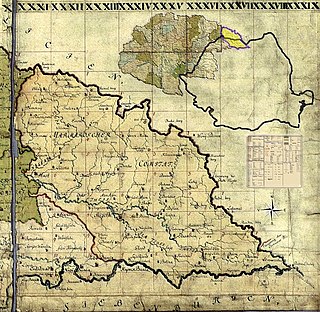
Maramureș is a historical region in the north of Transylvania, along the upper Tisa River. The territory of the southern part of this region is now in the Maramureș County in northern Romania, whereas its northern section is included in the Zakarpattia Oblast of western Ukraine.
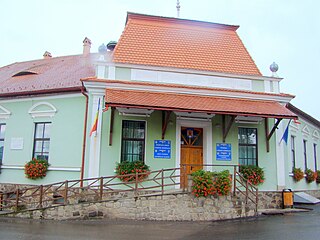
Ghidfalău is a commune in Covasna County, Transylvania, Romania composed of four villages: Angheluș (Angyalos), Fotoș (Fotosmartonos), Ghidfalău, and Zoltan (Érfalvazoltán).

Ozun is a commune in Covasna County, Transylvania, Romania composed of seven villages: Bicfalău (Bikfalva), Lisnău (Lisznyó), Lisnău-Vale (Lisznyópatak), Lunca Ozunului (Vesszőstelep), Măgheruș (Sepsimagyarós), Ozun, and Sântionlunca (Szentivánlaborfalva).

Vârghiș is a commune in Covasna County, Transylvania, Romania. It is composed of a single village, Vârghiș.

Hungarian-Romanian relations are foreign relations between Hungary and Romania dating back to the Middle Ages and continuing after the Romanian unification in 1859 and independence in 1877. In the past, they involved Wallachia and Moldavia.

The Hungarian–Romanian War was fought between Hungary and Romania from 13 November 1918 to 3 August 1919. The conflict had a complex background, with often contradictory motivations for the parties involved.
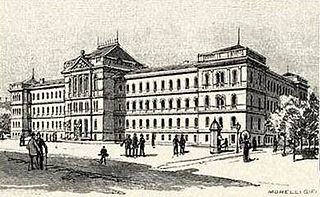
Royal Hungarian Franz Joseph University was the second modern university in the Hungarian realm of the Austro-Hungarian Empire. Founded in 1872, its seat was initially in Kolozsvár (Cluj-Napoca). After World War I, it first moved to Budapest for a brief period (1919–21), and later found temporary housing in Szeged (1921–40). In 1940, after the Second Vienna Award ceded Northern Transylvania, including Kolozsvár to Hungary, the university was relocated to its old home. By the end of the World War II the territory went back to Romania, subsequently the Romanian authorities replaced the Franz Joseph University with a new Hungarian language institution and the university ceased its operation without legal successor in 1945. Its faculties and buildings later became part of the University of Szeged, Babeș-Bolyai University, and University of Medicine and Pharmacy of Târgu Mureș.

The territorial evolution of Romania includes all the changes in the country's borders from its formation to the present day. The precedents of Romania as an independent state can be traced back to the 14th century, when the principalities of Moldavia and Wallachia were founded. Wallachia during its history lost several portions of its territory, either to the Ottomans or the Habsburgs. However, this land would be later essentially recovered in its entirety. Moldavia, on the other hand, suffered great territorial losses. In 1774, the Habsburgs invaded Bukovina and annexed it one year later, and in 1812, the Russian Empire took control of Bessarabia. Both territories were later exposed to powerful colonization policies. The principalities declared unification in 1859 as the Principality of Romania. This new state sought independence from the Ottoman Empire's vassalage, and in 1878, it fought a war against it alongside Russia. However, the latter would annex Southern Bessarabia, which was recovered decades before. Romania received Northern Dobruja as compensation, and would wage a war for the southern part against Bulgaria in 1913.



















